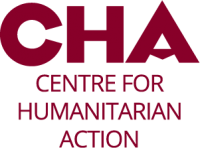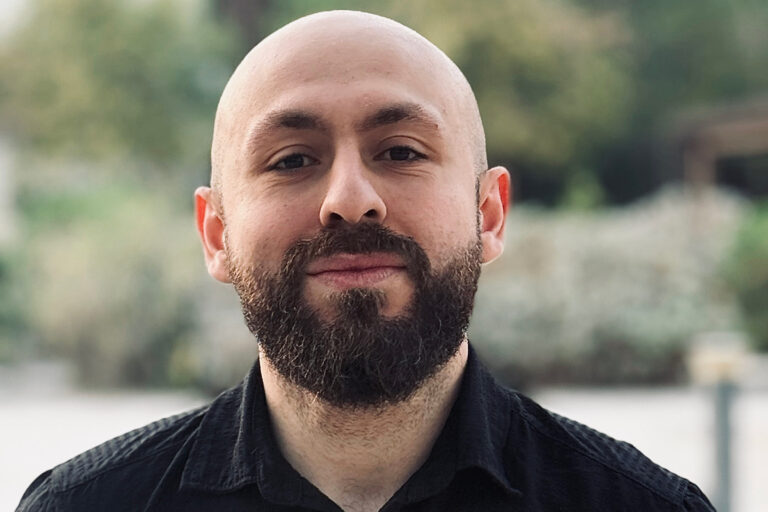| Author: | Manoug Antaby |
| Date: | 14. October 2025 |
After 14 years of struggle, Syria faces a different reality, shaped by evolving local, regional, and international dynamics. The plight of Syrians persists even after the fall of Assad, with the ramifications of five decades of dictatorship still deeply entrenched. Syrian people remain in dire need of assistance to sustain themselves, noting the widespread health issues, high unemployment rates and severe poverty levels in the country. Besides that, there is an alarming need to address the physical destruction of the key, social and productive infrastructure in Syria that is essential for the recovery of Syria. Despite the urgency of meeting people’s basic needs and driving structural recovery, the complexities and limitations for change in Syria may push state and non-state actors to be imbalanced in their operations.
Thus, given Syria’s current circumstances, a common question arises: Do we prioritise rapid humanitarian response to meet the immediate needs of millions of people, secure the needed environment to lead sustainable recovery, or find ways to effectively integrate both? While this piece argues that Syria requires a unified approach—integrating immediate aid with long-term recovery—a key question arises regarding how this integration can be achieved. Therefore, this article emphasises the importance of placing local actors and the horizontal governance mechanisms at the forefront of these efforts, acknowledging the essentiality of context-sensitivity and deep knowledge of people’s needs.
The context of humanitarian and recovery efforts after Assad
There are rapidly changing dynamics in post-Assad Syria, affecting the space in which humanitarian action and development plans take place. Economically, the country was facing a severe economic decline due to the sanctions imposed by global powers and economic insecurity in the country. However, as the new President of the United States Donald Trump lifted the decades-long sanctions on Syria in May 2025, this marked a new era in the country. It signifies a notable progress, paving the way for more active engagement of regional and global actors in aid and recovery strategies. Yet, this raises the risks that regional and international actors, rather than local actors, determine what to prioritise in Syria, as they have the financial influence and decision-making power to dictate the plans, based on certain agendas and interests.
Politically, there are serious challenges that threaten Syria’s future. The formation of a new government brings a drastic shift from over 50 years of autocratic rule, necessitating fundamental adaptations in the humanitarian and development domains. In addition, the presence of uncontrolled armed individuals and attacks organised by the Assad regime loyalists on the new government obstructed the operations of humanitarian actors. Such incidents raise safety and security concerns among humanitarians and impede recovery efforts, since post-conflict reconstruction requires order and stability. Besides that, the political loopholes constituted by the presence of influential minorities, aiming to establish their own autonomous areas in Syria, also undermines these efforts by resulting in fragmentation on societal and state levels.
To prioritise or to integrate?
There is an imperative to rethink whether we need to prioritise or integrate aid and recovery. The system’s responsibility for addressing the needs of people in Syria and guiding the reconstruction and recovery efforts needs to be better integrated. Rather than choosing between short-term assistance and long-term recovery, Syria needs a model that integrates both. More importantly, this must be led by Syrians themselves, recognising the significance of the positionality of various actors involved in these systems and their involvement.
As a result, the effectiveness of humanitarian and development efforts hinges on the intricate interplay between the actors involved and the mechanisms they adopt—two structural elements for effective humanitarian response and post-conflict recovery. Each element shapes and is, at the same time, shaped by the other, creating a dynamic system where strategies, priorities and outcomes in aid and recovery efforts are deeply interconnected. Therefore, the response to the current, devastating situation in Syria must go beyond traditional aid delivery or infrastructure rebuilding endeavours. Most of past efforts have failed to produce sustainable impact, with the top-down nature and lack of local ownership in recovery process neglecting the needs and aspirations of affected populations. Consequently, a common notion rose that either aid or recovery must be prioritised, serving as a critical impediment to guide Syria toward sustainable development.
This highlights the importance of humanitarian-development nexus—as defined by the CALP Network— where it emphasises the importance of bridging emergency humanitarian aid and long-term development to have sustainable impact in people’s lives. Therefore, there is an urgent need for the integration of short-term humanitarian response and long-term recovery strategies, ensuring that a carefully planned, community-centered approach places social cohesion at the heart of the integration process. Yet, this shift necessitates donors to adapt their frameworks and funding cycles to support integrated, lasting interventions, while maintaining flexibility in response to the evolving needs and realities on the ground rather than continuing emergency logic that undermines a nexus mindset.
Given the protracted crisis in Syria, shifting to a nexus approach is likely to be difficult, slow, and complex rather than automatic or smooth. After decades of development and humanitarian operations conducted under an emergency logic, institutional cultures are deeply entrenched, prioritising curative over transformative approaches. Therefore, donors and humanitarian actors must first acknowledge the need to change the culture of development and aid efforts, rather than continuing the same practices while expecting different outcomes. Involving development ministries, donors, and local stakeholders is vital to ensure that resources, planning, and capacities are aligned towards making the nexus approach feasible in practice. This requires clear incentives for collaboration, a shared vision for Syria’s future, and respect for the autonomy and agency of local actors. Moreover, as Syrians—including those in Syria and the diaspora—possess the needed skills and capacities to take the lead of Syria’s revival, their involvement guarantees effective integration and governance of both aid delivery and reconstruction efforts, centred on the voices of affected populations. This does not imply that international actors contribution is not needed. However, their role must be limited to supporting and not dictating such efforts.
Way forward: Localisation driven integration of aid and recovery
Despite the emergence of more acute crises, Syria remains a critical case, as failing to meet people’s immediate needs and to demonstrate a path to recovery and prosperity risks renewed conflict. This pushes the international and humanitarian community to support aid and recovery efforts in Syria by integrating displaced populations as contributors to recovery, enhancing the capacities of local actors to lead aid efforts, and facilitating initiatives related to conflict transformation and transitional justice. Such endeavors are crucial, resembling a win-win situation for Syria and the international community, as they can ease the burden on several refugee-hosting countries and promote stability in the region.
In fact, the humanitarian and recovery landscape in Syria demands a systemic transformation. By restructuring the support of international organisations—transforming from top-down governance into horizontal relationship—the financial and technical guidance of the Syrian diaspora, and the operational leadership of local actors, major shortcomings will be addressed. This will not only make the interventions sustainable and context-specific, but it will also adapt the aid and recovery strategies implemented to the current realities and needs in Syria.
For instance, there is a critical need for the establishment of a channel that connects the Syrian diaspora to the ongoing aid and recovery efforts in Syria. Considering their strong attachment to Syria and their ongoing financial support for the country, the Syrian diaspora constitute a crucial force in leading Syria towards stabilisation and sustainable growth through their engagement. The dedication of Syrian diaspora—in various forms—along with the knowledge and capacities of local actors can address all the deficiencies faced in humanitarian response and the strategic recovery efforts in Syria. Yet, these efforts do not bring any tangible results without serious commitment to localisation and the end of international organisations’ hegemony over the humanitarian and development realm in Syria. In other words, the role of local NGOs and grassroots organisations in integrating aid and recovery initiatives is fundamental, especially given their deep understanding of the Syrian context and community trust. Considering the centrality of social cohesion in equipping Syrians with the tools to rebuild and lead their country’s revival, community-based reconciliation initiatives emerge as a vital step towards sustainable recovery. This repositions international actors and realigns their involvement, ensuring their participation in humanitarian response and recovery efforts rather than working to secure their interests and promote international donors’ agendas. The inclusive leadership of Syrians can guarantee that aid and recovery are truly united into a path toward sustainable peace.
Manoug Antaby is a Research Assistant at the Centre for Conflict and Humanitarian Studies (CHS).



Related posts
What role should Germany play in the reconstruction of Syria?
02.10.2025Syria's future and Germany's contribution
08.04.2025 18:00 - 20:3010 years Syria crisis - new CHA policy paper online
09.03.2021